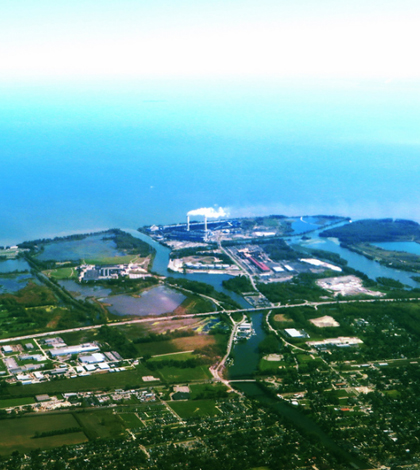Drinking Water: Tracking Fluoride Key For Michigan Water Plant

Lake Erie from Monroe, Michigan. (Credit: Ken Lund via Creative Commons 2.0)
Fluoride has been added to drinking water supplies in the U.S. for years. But it is also naturally present in many waterways, including Lake Erie. This means that drinking water plants nearby have to keep an eye on it as they withdraw water from the lake.
The Water Department of Monroe, Mich., is one such entity that continuously monitors fluoride levels. Officials there keep tabs on fluoride both before and after treatment, as well as its feed rate which is important for maintaining fluoride levels to meet health standards. They use a Thermo Orion Star A214 Benchtop Meter to measure the properties of Lake Erie water.
“We use the meter to measure the fluoride content of both raw and finished water. We compare these numbers to our fluoride feed rate,” said Paul McGinnis, operations supervisor at the City of Monroe Water Plant. “Obviously we have to stay below the MCL (Maximum Contaminant Levels) of 4 milligrams per liter for fluoride, so we have to get an accurate reading.”
McGinnis says that fluoride readings are taken at least once per shift by plant operators. As the supervisor, he also sometimes chips in to take sample readings periodically.
The fluoride content of the Lake Erie water coming in is usually pretty consistent, says McGinnis. But the plant does add some depending on the raw water it takes in.

Inside a water quality lab at the Monroe, Mich., water plant. A Thermo Orion Star A214 Benchtop Meter is used by plant personnel to track fluoride levels. (Credit: Paul McGinnis / City of Monroe Water Plant)
“We use the data collected to ensure our chemical feed pumps are delivering the proper amount depending on the raw water flow,” said McGinnis. “The fluoride content of Lake Erie is pretty consistent. Our feed rate is set at .60 milligrams per liter all year round, so our data show what we expect.”
As a water filtration operation, however, plant operators are concerned with much more than fluoride and they monitor a great number of things to keep water quality good for their customers. These steps help to guarantee that the water sent out is clean, safe and aesthetically pleasing for all those who drink it.
“While our main use (of the meter) is to measure fluoride content, the meter is also able to function as a pH meter in the event our primary pH meter is disabled,” said McGinnis. “We have not had to use it as such yet.”
Top image: Lake Erie from Monroe, Michigan. (Credit: Ken Lund via Creative Commons 2.0)




0 comments